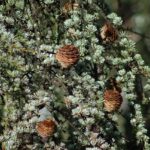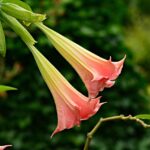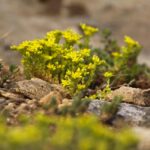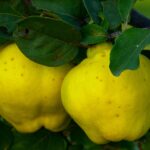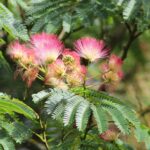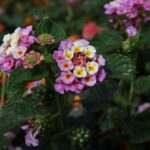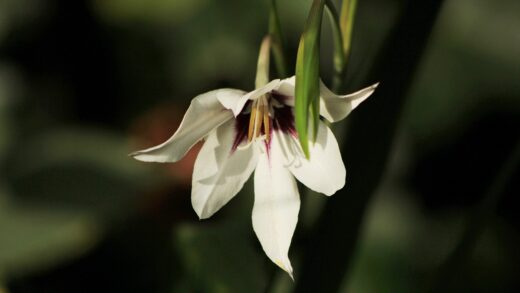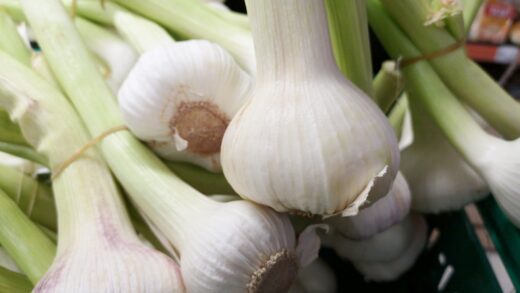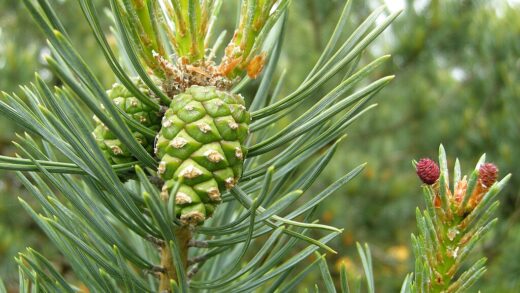Geranium x cantabrigiense is a refreshingly low-maintenance perennial when it comes to its nutrient needs, embodying the principle that sometimes less is more. This plant is not a heavy feeder and generally thrives in average garden soil without the need for an intensive fertilization regimen. In fact, over-fertilizing is a more common problem than under-fertilizing with this particular geranium. Excessive feeding, especially with high-nitrogen fertilizers, can lead to a lush overproduction of foliage at the expense of flowers, and can also result in weak, floppy growth that is more susceptible to pests and diseases. For this reason, a conservative and targeted approach to fertilization is always the best strategy. The key to providing adequate nutrition starts with the soil itself. Before planting, enriching the garden bed with a generous amount of well-decomposed organic matter, such as compost or aged manure, provides a fantastic foundation. This single act can often supply all the nutrients the plant will need for several years. Organic matter acts as a slow-release fertilizer, gradually breaking down to provide a steady and balanced supply of essential nutrients. It also dramatically improves soil structure, which enhances the plant’s ability to access the nutrients and water that are already present in the soil, making it a crucial first step in any feeding plan.
In most garden situations, an annual top-dressing with compost is sufficient to keep your Cambridge cranesbill healthy and happy. Simply apply a 2-3 centimetre layer of compost around the base of the plant in the early spring as new growth begins to emerge. This practice mimics the natural nutrient cycling process found in woodland environments, where falling leaves decompose to replenish the soil. The nutrients from the compost will slowly work their way down into the root zone with the help of rainfall and soil organisms, providing a gentle and sustained feeding throughout the growing season. This method avoids the risks associated with synthetic fertilizers and builds long-term soil health.
There are, however, certain situations where a supplemental feeding might be beneficial. If your plants are growing in particularly poor, sandy soil that is low in organic matter, or if they are showing signs of a nutrient deficiency, such as pale or yellowing leaves and weak growth, a light application of a balanced fertilizer can be helpful. When choosing a fertilizer, opt for a slow-release granular product with a balanced N-P-K ratio, such as 5-10-5 or 10-10-10. Applying this once in the early spring, according to the package directions, is typically all that is needed to give the plants a boost for the entire season.
Ultimately, the best guide for fertilization is the plant itself. A healthy Geranium x cantabrigiense will have vibrant green foliage, sturdy growth, and a good display of flowers in its season. If your plants look happy and are performing well, there is likely no need to add any fertilizer beyond an annual compost mulch. By focusing on building healthy soil and observing your plants’ performance, you can provide the ideal level of nutrition to support this wonderful ground cover without resorting to unnecessary and potentially harmful applications of fertilizer. It is a testament to the plant’s easy-going nature that it asks for so little from the gardener.
The role of soil health
The foundation of good plant nutrition is not fertilizer, but healthy soil. For a plant like Geranium x cantabrigiense that has modest feeding requirements, focusing on soil health is the most effective and sustainable long-term strategy. Healthy soil is a complex, living ecosystem teeming with microorganisms, fungi, and earthworms, all of which play a vital role in making nutrients available to plants. When you feed the soil with organic matter, you are supporting this entire ecosystem, which in turn feeds your plants in a natural, balanced way.
More articles on this topic
Before you even think about fertilizing, it is important to understand your existing soil. A simple soil test can provide invaluable information about its pH and the levels of major nutrients like nitrogen, phosphorus, and potassium. Geranium x cantabrigiense is quite adaptable but generally prefers a soil pH that is near neutral, from about 6.0 to 7.5. If your soil is extremely acidic or alkaline, the plant’s ability to absorb certain nutrients can be hindered, even if those nutrients are present in the soil. A soil test will tell you if you need to make amendments, such as adding lime to raise the pH of acidic soil.
Incorporating organic matter is the single most important action you can take to improve soil health. Materials like compost, leaf mould, and well-rotted manure improve soil structure, creating a crumbly texture that allows for good drainage and aeration while also retaining moisture. This is crucial for the health of the geranium’s roots. Furthermore, organic matter provides a slow, steady release of a wide range of micronutrients that are often lacking in synthetic fertilizers, leading to more robust and resilient plant growth over time.
Building healthy soil is an ongoing process. An initial amendment before planting is a great start, but continuing to add organic matter on an annual basis as a top-dressing or mulch will maintain and improve soil fertility year after year. This approach creates a self-sustaining system where the soil has all the resources the geranium needs to thrive. A plant growing in rich, healthy soil is better able to withstand stresses like drought, pests, and diseases, making your job as a gardener much easier in the long run.
Organic versus synthetic fertilizers
When it comes to providing supplemental nutrients to Geranium x cantabrigiense, gardeners have the choice between organic and synthetic fertilizers. Organic fertilizers are derived from natural sources, such as compost, bone meal, blood meal, and seaweed extracts. They work by feeding the soil’s microorganisms, which then break down the organic material and release nutrients in a form that plants can absorb. This is a slow, gradual process that provides a sustained release of nutrients and improves the overall health and structure of the soil.
More articles on this topic
The primary benefit of using organic methods, like top-dressing with compost, is that it is very difficult to over-fertilize and harm your plants. The nutrients are released slowly, reducing the risk of burning the plant’s roots. Organic amendments also contribute to the long-term fertility of your garden by adding to the soil’s organic content. This improves its ability to hold water and nutrients, and fosters a healthy population of beneficial soil life. For a low-maintenance plant like the Cambridge cranesbill, an organic approach is almost always sufficient and is the most sustainable choice.
Synthetic fertilizers, on the other hand, are manufactured chemical products that provide nutrients in a concentrated, water-soluble form. They are designed to be immediately available to the plant, which can result in a quick burst of growth. While this can be useful for correcting a severe nutrient deficiency, it is often too much for a plant like Geranium x cantabrigiense. The rapid release can lead to the aforementioned problems of excessive leafy growth at the expense of flowers and can also leach into the groundwater if not fully absorbed by the plant.
If you do choose to use a synthetic fertilizer, it is crucial to use it sparingly and to follow the application instructions precisely. Opt for a balanced, slow-release granular formula rather than a liquid feed. A slow-release product will provide nutrients over a longer period, more closely mimicking the natural process and reducing the risk of burning the roots or causing weak growth. However, for most situations, the gentle and soil-building approach of organic fertilization is far better suited to the modest needs of the Cambridge cranesbill.
Application timing and methods
The timing of any fertilizer application is just as important as the type of fertilizer you use. The best time to provide nutrients to Geranium x cantabrigiense is in the early spring, just as the plant is breaking its winter dormancy and beginning to produce new growth. Applying nutrients at this time provides the plant with the resources it needs to support the development of healthy foliage and to fuel its upcoming flowering period. This single, well-timed application is usually all that is required for the entire year.
Avoid fertilizing in late summer or autumn. Applying fertilizer, especially one high in nitrogen, late in the season can stimulate a flush of tender new growth. This new growth will not have sufficient time to harden off before the first frosts arrive and will be highly susceptible to winter damage. Late-season feeding can disrupt the plant’s natural process of preparing for dormancy, potentially compromising its winter hardiness and overall health. Let the plant slow down naturally as the days get shorter and cooler.
The most effective and gentle method for feeding this geranium is to apply a top-dressing of compost. In early spring, simply spread a 2-3 centimetre layer of finished compost on the soil surface around the base of the plant, extending out to the drip line (the edge of the foliage). There is no need to dig it into the soil; natural processes like rainfall and the activity of earthworms will gradually incorporate the nutrients into the root zone. This method avoids disturbing the plant’s roots and improves the soil at the same time.
If you are using a granular slow-release fertilizer, the application method is similar. Lightly sprinkle the recommended amount of fertilizer onto the soil surface around the plant, being careful to avoid getting the granules on the leaves or in the crown of the plant, as this can cause burning. Gently scratch the granules into the top centimetre of soil with a hand cultivator or your fingers. Afterwards, water the area well to help activate the fertilizer and start the process of releasing the nutrients into the soil.
Recognizing nutrient deficiencies
Although Geranium x cantabrigiense is not prone to nutrient problems, it is still helpful for a gardener to be able to recognize the signs of a potential deficiency. A lack of essential nutrients can manifest in several ways, most commonly through changes in the foliage. One of the most common signs is chlorosis, which is a general yellowing of the leaves. This is often caused by a lack of nitrogen, which is a mobile nutrient, so the yellowing typically appears on the older, lower leaves first as the plant moves the available nitrogen to support new growth.
If the yellowing occurs between the leaf veins while the veins themselves remain green, this is a sign of an iron or magnesium deficiency. This is more likely to occur in soils with a very high pH (alkaline), as the high pH can make it difficult for the plant to absorb these micronutrients from the soil. While less common, it is a possibility in certain soil types. Correcting the soil pH is often a more effective long-term solution than simply adding more of the deficient nutrient.
Other signs of poor nutrition can include stunted or weak growth, smaller-than-usual leaves, or a sparse flowering display. If your plants are generally failing to thrive and you have ruled out other potential issues like improper watering or insufficient light, a lack of nutrients might be the culprit. This is more likely to be a problem in very old, unamended soil or in long-term container plantings where the nutrients in the potting mix have been depleted over time.
If you suspect a nutrient deficiency, the first course of action should be to apply a top-dressing of high-quality compost, as this provides a broad spectrum of both macro- and micronutrients. For a quicker fix, you could use a balanced liquid fertilizer, such as one made from seaweed or fish emulsion, diluted to half strength and applied to the soil. However, it is important to first confirm that the problem is indeed a lack of nutrients, as these symptoms can also be caused by other cultural issues like poor drainage or soil compaction.




